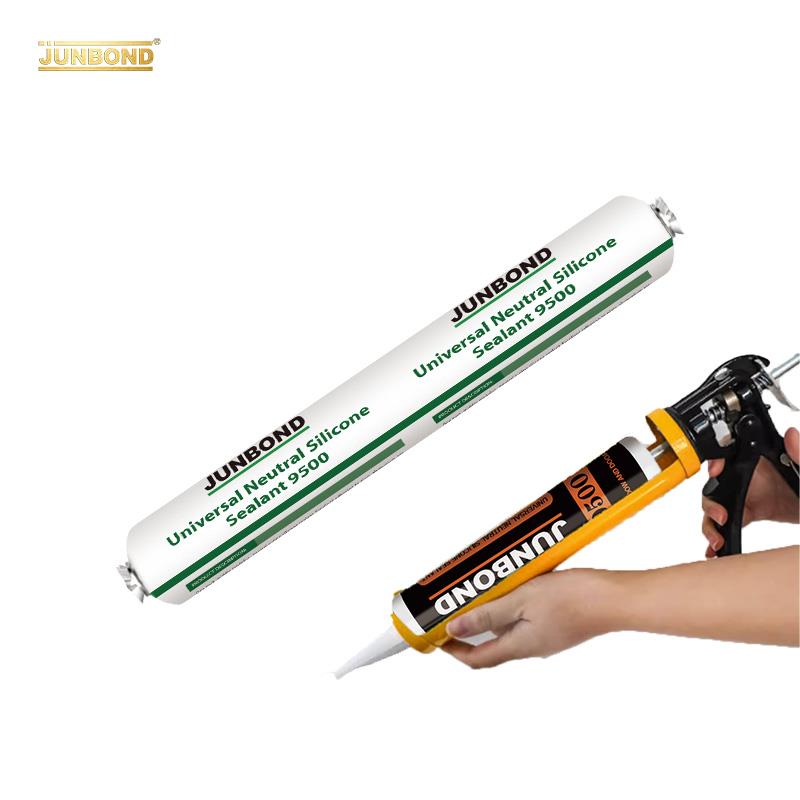
What Is The Difference Between Silicone Sealant And Caulk?
Composition Properties
Both
silicone sealant
and silicone caulk are made from silicone, a synthetic polymer that is known for its flexibility, durability, and resistance to moisture. However, the formulation of these products can vary, leading to differences in their properties and uses.
Neutral Silicone sealants
are typically designed for more demanding applications. They are often 100% silicone, which means they provide superior adhesion and flexibility. This makes them ideal for sealing joints and gaps that may experience movement, such as those found in windows, doors, and roofing. Silicone sealants are also resistant to extreme temperatures, UV rays, and harsh weather conditions, making them suitable for both indoor and outdoor use.
On the other hand, silicone caulk is often a blend of silicone and other materials, such as latex or acrylic. This can make it easier to work with and clean up, but it may not offer the same level of durability and flexibility as pure silicone sealants. Silicone caulk is generally used for less demanding applications, such as sealing gaps around baseboards, trim, and other interior surfaces.
Application and Use Cases
The application of
Decoration silicone sealant
and silicone caulk can also differ based on their intended use. Silicone sealants are often used in construction and renovation projects where a strong, long-lasting bond is required. They are commonly applied in areas that are exposed to water, such as bathrooms, kitchens, and outdoor spaces. Their ability to withstand moisture makes them an excellent choice for sealing around sinks, tubs, and showers.
Silicone caulk, while still effective, is more suited for interior applications where flexibility and ease of application are prioritized. It is often used for filling small gaps and cracks in walls, ceilings, and trim. Because it can be painted over and is easier to clean up, silicone caulk is a popular choice for DIY enthusiasts looking to achieve a polished finish in their home.
Curing Time and Longevity
Another important difference between silicone sealant and silicone caulk is their curing time and longevity. Silicone sealants typically have a longer curing time, which can range from 24 hours to several days, depending on the product and environmental conditions.
The curing time of the silicone sealant increases with the increase of the bonding thickness. For example, the acid sealant with a thickness of 12mm may take 3-4 days to solidify, but within about 24 hours, there are 3mm The outer layer is cured.
20 psi peel strength after 72 hours at room temperature when bonding glass, metal or most woods. If the silicone sealant is partially or completely sealed, then the curing time is determined by the tightness of the seal. In an absolutely airtight place, may not solidify.
Once cured, silicone sealants can last for many years without needing replacement.
Silicone caulk, in contrast, usually cures more quickly, often within a few hours. However, it may not have the same lifespan as silicone sealants, especially in high-moisture or high-movement areas. Homeowners should consider the longevity of the product when deciding which to use for their specific project.
Conclusion
while silicone sealant and silicone caulk may seem similar at first glance, they serve different purposes and have unique properties that make them suitable for specific applications. Silicone sealants are ideal for demanding, high-moisture environments, while silicone caulk is better suited for interior projects where ease of use and paintability are important. By understanding these differences, homeowners and DIY enthusiasts can make informed decisions and choose the right product for their needs, ensuring a successful and long-lasting result.

Legal Disclaimer:
MENAFN provides the
information “as is” without warranty of any kind. We do not accept
any responsibility or liability for the accuracy, content, images,
videos, licenses, completeness, legality, or reliability of the information
contained in this article. If you have any complaints or copyright
issues related to this article, kindly contact the provider above.


















Comments
No comment